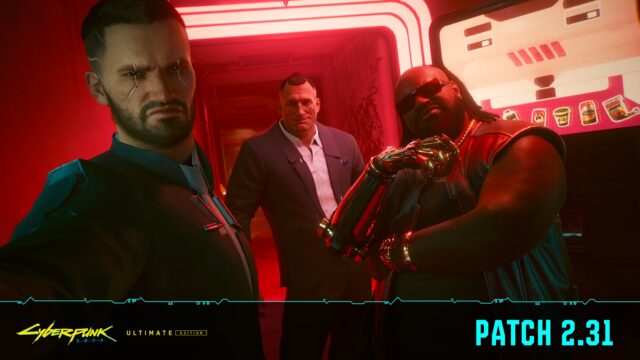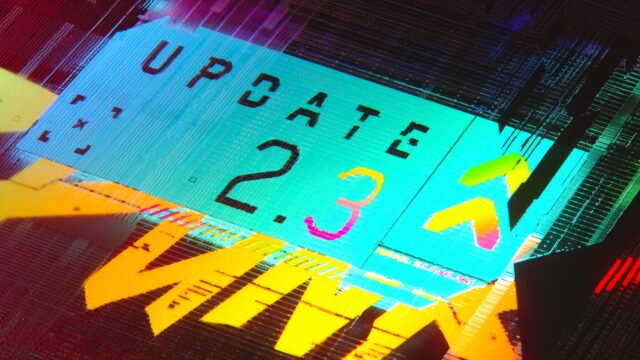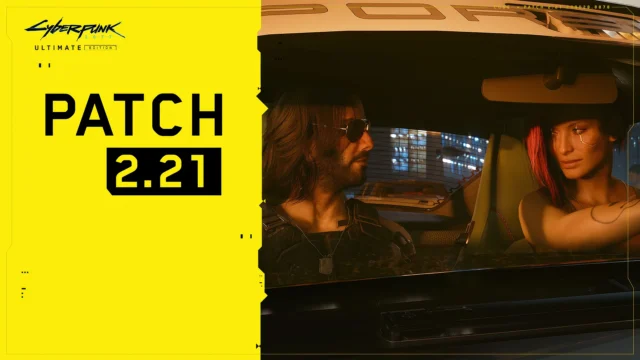Most of the Cyberpunk 2077 characters you’ll meet in Night City have different connections and perspectives on the setting, but they’ve all got one unifying point to stress: the possibilities of Night City are endless. Those possibilities draw people in and keep inhabitants entangled in the affairs of the city with everyone looking for their next big move, their next thing to do. Not everyone is as impressed with the city though and instead, say it’s just a city like any other and that people can find what they’re looking for elsewhere. As it turns out, Cyberpunk 2077 has a lot in common with its bustling, futuristic setting.
Those possibilities the define Night City are equally defining of CD Projekt Red’s Cyberpunk 2077. Starting immediately with robust character customization options and different life paths, it’s evident from the beginning that no two playthroughs will be alike. Once the game sets you free to embark where you may, you’re presented with a frankly overwhelming amount of options. I haven’t yet completed the main storyline, but I’ve invested over 60 hours into Cyberpunk 2077 with around 15 of those hours put in before the prologue even ends, so my version of V feels as much a part of Night City as any other inhabitant by now.
Its abundances of quests and opportunistic ventures keep the city and your interest thriving by constantly distracting players from their main objectives. It’s easy to look at a quick mission just next door and think “I’ll do that quickly and get back to business soon,” and the next thing you know, you’re on the opposite end of Night City with a backpack of loot and some new implants.
The quests I consider the entry-level missions, the ones where you’re putting down gang activity or taking out a high-profile objective, do lose their luster over time as things get more bloated though. Tasking players with a challenge even as basic as capturing a target alive or looking for optional objectives does a lot to keep things fresh, but in most quests embarked on as a passerby, you’ll spend more time mashing buttons to scrape loot off the ground than you will using your overpowered arsenal of techniques and tools.

As I plunged deeper into Night City, I appreciated more and more how weighty players’ decisions become and how they influence not just immediate consequences but lasting ones. I’ve reloaded quest after quests just to see what different outcomes looked like and probably still didn’t fully understand the ramifications of splintering storylines without following through with them. Hearing about your exploits on TVs in an elevator or receiving a text from an acquaintance to either thank or threaten you seem like small gestures, but they do wonders to make the setting feel alive and contained despite its vastness.
The implants, cyberhacks, and weapons you’ll use in and out of battles are diverse indeed, but it’s a shame we don’t see them more in Cyberpunk 2077’s combat by people other than V. Despite their augmentations sometimes making them almost unrecognizable, people you encounter in fights don’t have much interest in using their technological advances. Someone coming at you with Mantis Blades or a Netrunner trying to overheat your systems are rare occurrences in Night City that are easily dealt with.
One of the more common enhancements allows enemies to zip from side to side while advancing on a player, but so long as you keep backing up, they’ll almost always just whiff their attack in front of you. There’s a cyberhack players can employ that disables enemies’ cyberware, and it’s one I’d love to use more often, but what’s the point when the enemies won’t use their gear themselves? One must wonder how V can get so much use from his or her tech while others are content to just look the part.
You can opt for playstyles that minimize your use of cyberhacks and focus more on physical superhuman abilities if you want, but it’s not an advisable path. Stripping away the futuristic layer of the game reveals a foundation that feels old and rickety, one that doesn’t look so appealing when there’s not so much going on. Animations like getting in a car, jumping, and punching enemies betray the cyberpunk dressings and feel dated next to everything else that’s meant to look so new.
One of the best examples of that is the Gorilla Arms players can purchase, an augmentation that’s tragically one of my favorites. Gorilla Arms weaponize players’ fists with enhanced elemental or physical damage and allow you to unleash flurries of deadly combos if you’ve allotted skill points appropriately, but using them is an ugly sight indeed. Your hands just fly out in front of you with little indication as to whether you’re actually making contact or not other than a “thud” as your body clips into and through your opponent. Special animations play at times to deliver the killshot on an enemy when using those physical weapons, but after seeing them, I’d rather go without.

Cyberpunk 2077’s masterful sounds and music set to players’ actions help make up for even the most rigid actions. The game has fast travel stations galore, but if an objective is one or two kilometers away, a motorcycle ride while flipping through stations isn’t a bad idea either. Music during combat and in unique areas similarly influences decisions with how appropriately it matches different situations. Booming music in a club will make you want to walk slower and more dramatically towards an objective who’s about to get what they’ve had coming to them, and frantic music during a boss fight with a melee-focused enemy will inspire you to pull out those Gorilla Arms no matter how ugly they may be in action.
But then there are the bugs. The endless, immersion-breaking, quest-breaking bugs. I’d already lost track of how many guns I picked up floating in midair before one patch landed, and even after that, things like phones, cigarettes, and anything else people would hold still linger in the air long after they’ve moved away. I’ve had to restart quests because the NPC I needed to interact with got smashed into a staircase and wasn’t accessible or the last enemy I needed to kill was stuck under the ground.
I’ve been spotted by enemies through walls even after dutifully disabling every camera in sight, and I’ve long abandoned Tech weapons that allow you to charge up a shot because that function sometimes just doesn’t work for no explainable reason. The game thinks I have the menu open nearly every time I exit a vehicle, my hair disappears when I look in a mirror, and subtitles from quests finished hours prior sometimes get stuck on-screen when loading a save. Cyberpunk 2077 has a long list of bugs that need fixing before it’s able to be enjoyed without interruption.
But clunky actions and broken quests aside, it’s still nearly impossible to not get hooked on Cyberpunk 2077 and, more specifically, on Night City. I’ve completed quests that made me physically uncomfortable and yearn for justice or vengeance alongside the affected characters, and I’ve crafted my version of V into exactly the kind of character I’d want with the reassuring knowledge that there will always be an option that fits my preferences. The plentiful possibilities and outcomes beg for multiple playthroughs, and I’m happy to oblige later after a break from Night City and after things have been cleaned up a bit.
Rating: 4 out of 5
Cyberpunk 2077 releases on December 10th for the PlayStation 4, Xbox One, PC, and Stadia platforms. The game was reviewed on the PC platform with a review code provided by the publisher.


